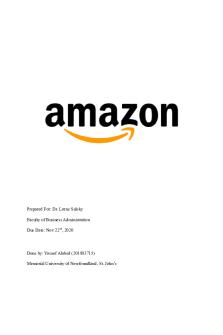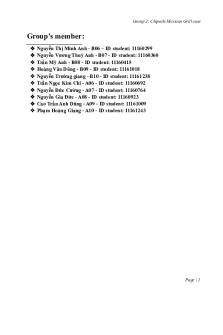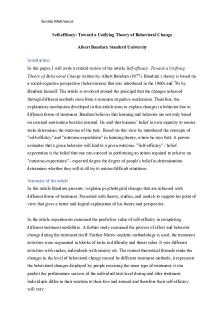Individual Assignment FIN420 Nurul Nadzirah Binti ABD Halim PDF

| Title | Individual Assignment FIN420 Nurul Nadzirah Binti ABD Halim |
|---|---|
| Author | Nurul Nadzirah Abd Halim |
| Course | Financial Management |
| Institution | Universiti Teknologi MARA |
| Pages | 23 |
| File Size | 1.4 MB |
| File Type | |
| Total Downloads | 198 |
| Total Views | 342 |
Summary
FACULTY OF BUSINESS AND MANAGEMENTUNIVERSITI TEKNOLOGI MARA (UiTM) MALACCA CITY CAMPUSBACHELOR OF BUSINESS ADMINISTRATION (HONS.) HUMAN RESOURCE MANAGEMENT (BA243)INDIVIDUAL ASSIGNMENTPELANGI PUBLISHING GROUP BERHAD AND SASBADI HOLDING BERHADSUBJECTFINANCIAL MANAGEMENT (FIN420)STUDENT’S NAMENURUL NA...
Description
FACULTY OF BUSINESS AND MANAGEMENT UNIVERSITI TEKNOLOGI MARA (UiTM) MALACCA CITY CAMPUS
BACHELOR OF BUSINESS ADMINISTRATION (HONS.) HUMAN RESOURCE MANAGEMENT (BA243)
INDIVIDUAL ASSIGNMENT PELANGI PUBLISHING GROUP BERHAD AND SASBADI HOLDING BERHAD
SUBJECT FINANCIAL MANAGEMENT (FIN420)
STUDENT’S NAME NURUL NADZIRAH BINTI ABD HALIM
MATRIX NUMBER 2019251826
LECTURER’S NAME PUAN NOR AIZAN BINTI MOHAMED
BACKGROUND OF PELANGI PUBLISHING GROUP BERHAD
PPG is a regional educational publishing and printing company established in 1979 which was publicly listed in 2004. Its headquarters is in Malaysia and it has subsidiaries in Thailand, Indonesia, Singapore, United Kingdom and associate company in China with over 400 employees. With over 38 years of experience in the publishing industry, PPG has grown from strength to strength with its wide range of publications which includes academic books, children books, higher education books, digital or multimedia educational products, novels, comics, magazines and many more. These publications have been distributed to over 2,000 bookshops throughout Malaysia and over 20 countries around the world. Today, PPG is a full-fledged educational publisher specialised in editing, typesetting, illustrating/designing, printing and distributing. In the past year, PPG has responded to the needs of learning and teaching in the 21st century by joining up with FrogAsia Sdn Bhd to deliver free revision digital quizzes via 1BestariNet to students in Malaysia. This helps the Group to remain relevant by embracing technological innovation and diversifying beyond publishing, to offer elearning and technology-driven information solutions. Dedicated to the betterment of Malaysia’s quality of education, Pelangi Publishing Group Sdn Bhd has an excellent track of record in the design, publication, warehousing and distribution of books, magazines, multimedia and digital product for over 40 years.
BACKGROUND OF SASBADI HOLDING BERHAD
Sasbadi Holding Berhad is one of the well-known education book providers since 1985. Sasbadi has been providing students with quality books and educational materials to help them on their journey through school and life. Students, teachers and parents trust their publications because they are ever responsive to changing times and changing requirements. They are always ready to meet the needs of the market and produce materials that are current and relevant. In response to the needs of learning and teaching in the 21st century, they had developed and create solutions that are user-friendly, interactive and fun for teachers and students by leveraging on information and communications technology (ICT). Their solutions include PC software, mobile applications and cloud-based platforms suited for self-paced learning as well as for the future classroom. Recognising the transformation in educational objectives, Sasbadi began partnering with international brands like LEGO® Education since 2005 to provide Malaysian students with a range of hands-on learning tools. These tools encourage various skills that are needed by the 21st century work force, such as critical thinking, innovation and collaboration capabilities. To that end, Sasbadi also joined up with the Ministry of Education to provide students a platform to hone these 21st century skills and develop their interest in Science, Technology, Engineering and Mathematics (STEM) through the National Robotics Competition (“NRC”).
PELANGI FINANCIAL RATIO TREND ANALYSIS
Financial Ratio 1. Liquidity Ratio a) Current Ratio Current Asset Current Liability
2017
2018
2019
= 76,210,615
= 69,744,558
= 71,843,831
30,922,675
26,323,209
29,189,251
= 2.46 x
= 2.65 x
= 2.46 x
Analysis: Overall, there have increases in current asset other than current liability in 2018 which is 2.65x meanwhile in 2019, it decreases to 2.46x. This shows that this company has the good liquidity and the ability to pay their short-run debts. = 76,210615= 69,744,558b) Quick Ratio
= 71,843,831-
Current Asset- Inventories
37,726548
35,726,309
38,203,534
Current Liability
30,922,675
26,323,309
29,203,534
= 1.24 x
= 1.29 x
= 1.15 x
Analysis: In 2018, the company’s quick ratio had increase from 1.24x to 1.29x. However, the quick ratio become decrease to 1.15x in 2019. This shown that this company have good liquidity and they can pay their short-run debts. 2. Activity Ratio a) Average Collection = 15,513,462 Period 74,176,808/360
= 16,348,901
= 17,816,524
67,044,100/360
68,870,079/360
Account Receivable
= 87.78 days
= 93.13 days
= 75.29 days
Daily Credit Sales / 360
Analysis: The average collection period for this company on 2017 is 75.29 days and increase to 87.78 days in 2018 and increase to 93.13 days on 2019. This shown that this company are not able to collect debts from the customers in shorter period. b) Inventory Turnover Cost Of Good Sales
= 45,971,394
= 44,015,545
= 43,492,579
37,726,548
35,726,309
38,203,534
Inventories
= 1.22 x
= 1.23 x
= 1.14 x
Analysis: From inventory turnover, we can see that in 2018, the company are able to sell their products (1.23 times) while in 2019, the ability to sell their product is decrease to 1.14 times. This will make the company to pay more on store cost and have higher inventory obsolescence. 3. Leverage Ratio a) Debt Ratio Total Debt Total Asset Analysis:
= 46,378,940
= 41,374,488
= 43,451,084
143,445,442
138,017,359
141,593,358
= 32.33 %
= 30.00 %
= 30.68 %
This company is using debt financing at a better rate compare to the industry and they can pay their interest payment. b) Time Interest Earned Earning Before Interest Tax Interest Expenses Analysis:
= 4,649,444
= 1,406,438
= 4,168,534
2,392,670
3,991,198
2,628,674
= 1.96 x
= 0.35 x
= 1.59 x
The ratio of the time interest earned for this company shown the decreases in 2018 where they have less risk on borrowing. However, in 2019 the ratio increases to 1.59x which is shown that they have more risk on borrowing assets. 4. Profitability Ratio = 471, 075 = 2,904,026 a) Return on Asset 138,017,359 143,445,442 Net Profit After Taxes = 3.41% = 0.02% Total Asset
= 1,837,193 141,593,358 = 0.01%
Analysis: The analysis shown the inconsistency of return on assets for this company where in 2018, it increases from 0.02% to 3.41% and decrease to 0.01% in 2019. This shown that the assets of this company were financed by debt and they have bad reputation. It also will make the company are not able to pay their debts. b) Return on Equity Net Profit After Taxes
= 2,904,026 97,066,502
= 471,075 96,642,871
= 1,837,193 98,142,274
Stockholder Equity Analysis:
= 0.03%
= 4.87%
= 0.02%
The company have inconsistency of return on equity because in 2018, they can get more return other than 2017 (4.87%). However, in 2019 the return equity decreases drastically to 0.02%.
SASBADI FINANCIAL RATIO TREND ANALYSIS
Financial Ratio 1. Liquidity Ratio a) Current Ratio Current Asset Current Liability
2017
2018
2019
= 137,637
= 145,215
= 140,003
69,130
74,979
= 2.00 x
= 1.94 x
66,526 = 2.10 x
Analysis: There have decreases in current asset other than current liability in 2018 which is 1.94x meanwhile in 2019, it increases to 2.1-x. This shows that this company has the good liquidity and the ability to pay their short-run debts. b) Quick Ratio = 137,637= 145,215-
= 140,003-
Current Asset- Inventories
65,188
73,462
73,446
Current Liability
69,130
74,979
66,526
= 1.05 x
= 1.00 x
= 1.00 x
Analysis: The company’s quick ratio had increase from 1.05x to 1.00x and remain constant in 2019. This shown that this company have they are not able to pay their short-run debts. 2. Activity Ratio a) Average Collection Period Account Receivable Daily Credit Sales / 360
= 54,122
= 56,032
= 49,482
93,053/360
85,858/360
87,727/360
= 209.39 days
= 234.94 days
= 203.06 days
Analysis: The average collection period for this company on 2017 is 209.39 days and increase to 234.94 days in 2018. Then, it becomes decrease to 203.06 days on 2019. This shown that this company are still not able to collect debts from the customers in shorter period. b) Inventory Turnover Cost Of Good Sales Inventories
= 47,531 212,971 = 0.22 x
= 48,870 229,718 = 0.21 x
= 51,373 221,468 = 0.23 x
Analysis: From inventory turnover, we can see that the company are able to sell their product even though there have some decreases on inventory turnover in 2018. 3. Leverage Ratio = 69,130 = 74,979 = 66,526 a) Debt Ratio 212,971 229,718 221,468 Total Debt = 32.46 % = 32.64 % = 30.04 % Total Asset Analysis: This company is not using debt financing at a better rate compare to the industry and they are not able to pay their interest payment. b) Time Interest = 11,451 Earned 4,733 Earning Before Interest Tax = 2.42 x Interest Expenses Analysis:
= 4,229
= 6,876
4,828
3,551
= 0.88 x
= 1.94 x
The ratio of the time interest earned for this company shown the decreases in 2018 where they have less risk on borrowing. However, in 2019 the ratio increases to 1.94x which is shown that they have more risk on borrowing assets. 4. Profitability Ratio = 2,041 = 2,055 a) Return on Asset 212,971 229,718 Net Profit After Taxes = 9.58 % = 8.95% Total Asset Analysis:
= 3,264 221,468 = 0.01%
The analysis shown the inconsistency of return on assets for this company where in 2018, it decreases from 9.58 % to 8.95% and decrease drastically to 0.01% in 2019. This shown that the assets of this company were financed by debt and they have bad reputation. It also will make the company are not able to pay their debts. b) Return on Equity Net Profit After Taxes Total Asset
= 2,041 143, 841 = 0.01%
= 2,055 154,739 = 0.01%
= 3,264 154,942 = 0.02%
Analysis: The company have a low return in equity and shown that they not manage their money very well.
COMPERATIVE ANALYSIS OF PELANGI PUBLISHING AND SASBADI HOLDING FOR THE YEAR 2019 RATIO
PELANGI PUBLISHING
SASBADI HOLDING
LIQUIDITY RATIO CURRENT RATIO
2.46x
2.10x
Analysis: Current ratio shows us that the short-term solvency of the fi and show the companies ability to pay their short-term obligation. Pelangi Publishing has better ability to repay against the liabilities that they owned rather than Sasbadi Holding which is have good ability too to repay its short-term obligation. QUICK RATIO
1.15x
1.00x
Analysis: Quick ratio shows us the firm’s ability to meet its short-term obligations without having to rely on its inventories and prepaid expenses. In 2019, we can see that Pelangi can meet its short-term obligations and have more performance with Sasbadi. ACTIVITY RATIO AVERAGE COLLECTION PERIOD
93.13 DAYS
203.06 DAYS
Analysis: Average collection period tells us if the policy needs to collect all debt within 30 days, so firm has problem in collecting its debt. In 2019, we can see that both company poor performance in collecting their debts. INVENTORY TURNOVER
1.14x
0.23x
Analysis: Inventory turnover tells us on how quickly the company is selling its inventory. In 2019, we can see that Pelangi Publishing has good performance in selling their inventory which is 1.14 times rather than Sasbadi Holding which only 0.23 times. LEVERAGE RATIO DEBT RATIO
30.68%
30.04%
Analysis: Debt ratio refer to what percentages of company’s asset are financed by debt. Both companies show us that they have poor performance, and this make it costly for their company to borrow additional funds. TIME INTEREST EARNED
1.59x
1.94x
Analysis: Time interest earned measured the ability of the company to meet it fixed interest payments. Sasbadi Holding has higher ratio which reflect the company so that they can meet its annual interest cost within its operating income. PROFITABILITY RATIO RETURN ON ASSET
0.01%
0.01%
Analysis: Return on asset show us the amount of profit earned on each dollar invest in asset;
measures management’s efficiency in using debts. Both companies show that they have poor performance in earning return on asset RETURN ON EQUITY
0.02%
0.02%
Analysis: Return on equity tells us the amount of profit earned on each dollar invested by shareholders; measures management’s efficiency in using stockholder’s funds. Both companies show that they have poor performance on earning return on money that shareholders have invested on them.
CONCLUSION AND RECOMMENDATION
As conclusion, we can compare both company’s financial ratios with its ratios and the company’s performance on managing their financial. As we can see, both companies have their own poor and good performance on managing financial and it also related to the industry’s performance. We usually know that book publishing industries did not have good performance and they need to hold more risk to keep stay in the industry. I would like to give some recommendation to both companies. Their company is the well-known book publisher, but they still have problems on managing their financial. In my opinion, they can decrease the number of books printed out and only take a small amount of it to print out, so that it can help them to decrease the cost of inventory store and inventory obsolescence. Next, they need to avoid from publishing a lot of books, so that it will help in reducing the production cost.
REFERENCES
Annual Report Pelangi Publishing https://www.pelangipublishing.com/
Group
Berhad
(2018)
from
Annual Report Pelangi Publishing https://www.pelangipublishing.com/
Group
Berhad
(2019)
from
Annual Report Sasbadi Holding Berhad (2018) from http://www.sasbadi.com/ Annual Report Sasbadi Holding Berhad (2019) from http://www.sasbadi.com/ History of Pelangi Publishing https://www.pelangipublishing.com/
Group
Berhad,
access
History of Sasbadi Holding Berhad, access from http://www.sasbadi.com/
from
APPENDIX...
Similar Free PDFs

Assignment FIN420 cash budget 01
- 3 Pages

Individual Assignment
- 26 Pages

Individual Assignment
- 20 Pages

Individual assignment
- 5 Pages

Individual assignment
- 3 Pages

Halim Purnomo Psikologi Pendidikan
- 239 Pages

FIN420 - Financial Management (Notes)
- 287 Pages
Popular Institutions
- Tinajero National High School - Annex
- Politeknik Caltex Riau
- Yokohama City University
- SGT University
- University of Al-Qadisiyah
- Divine Word College of Vigan
- Techniek College Rotterdam
- Universidade de Santiago
- Universiti Teknologi MARA Cawangan Johor Kampus Pasir Gudang
- Poltekkes Kemenkes Yogyakarta
- Baguio City National High School
- Colegio san marcos
- preparatoria uno
- Centro de Bachillerato Tecnológico Industrial y de Servicios No. 107
- Dalian Maritime University
- Quang Trung Secondary School
- Colegio Tecnológico en Informática
- Corporación Regional de Educación Superior
- Grupo CEDVA
- Dar Al Uloom University
- Centro de Estudios Preuniversitarios de la Universidad Nacional de Ingeniería
- 上智大学
- Aakash International School, Nuna Majara
- San Felipe Neri Catholic School
- Kang Chiao International School - New Taipei City
- Misamis Occidental National High School
- Institución Educativa Escuela Normal Juan Ladrilleros
- Kolehiyo ng Pantukan
- Batanes State College
- Instituto Continental
- Sekolah Menengah Kejuruan Kesehatan Kaltara (Tarakan)
- Colegio de La Inmaculada Concepcion - Cebu








